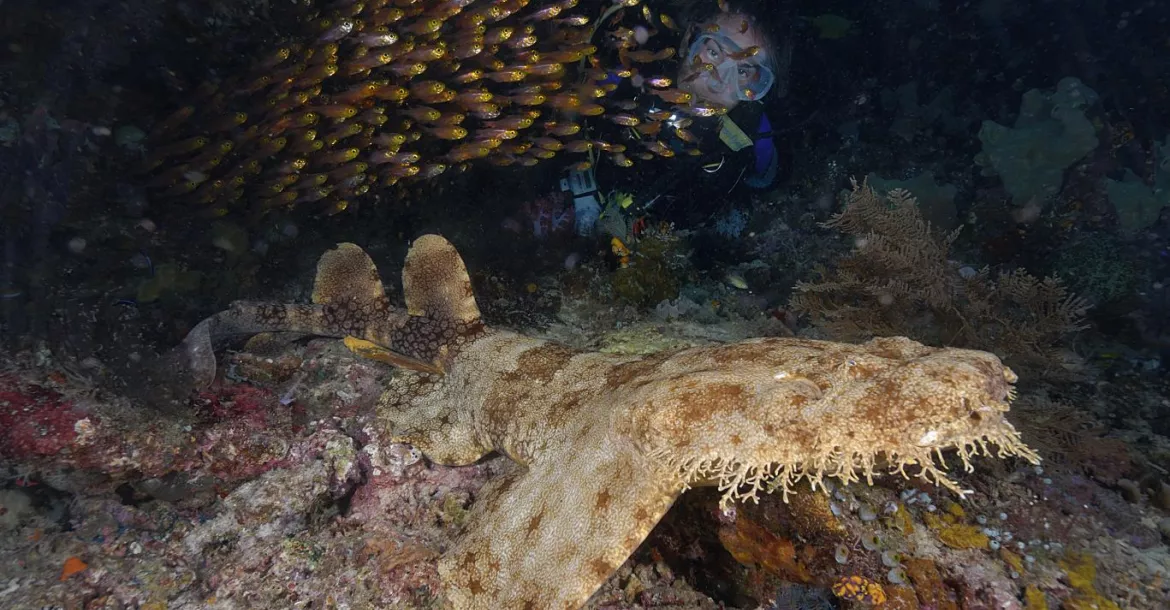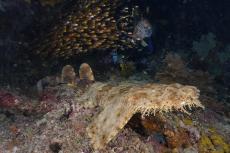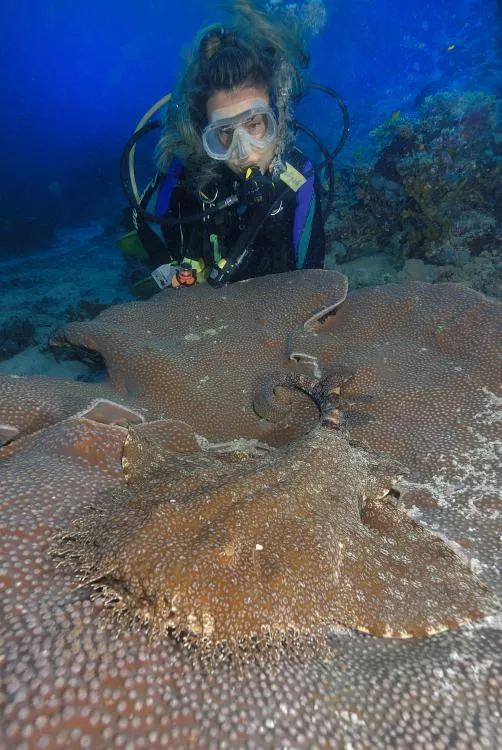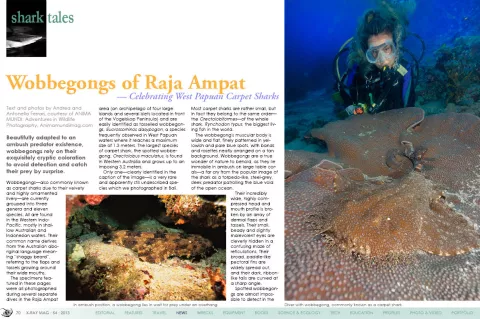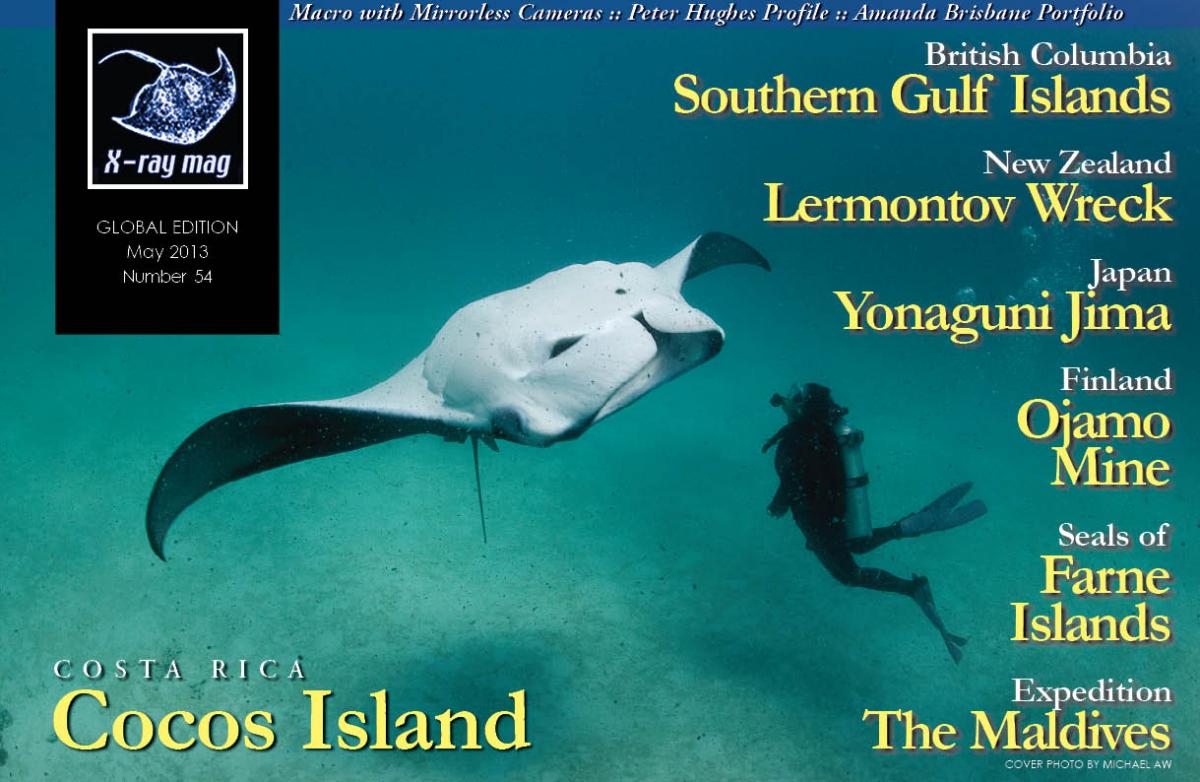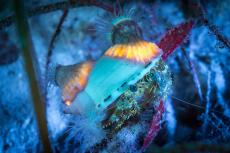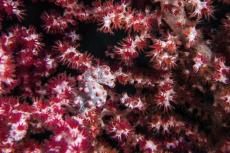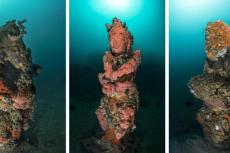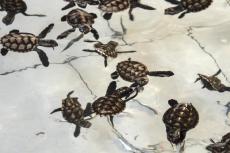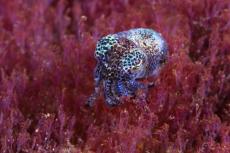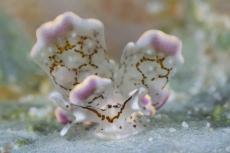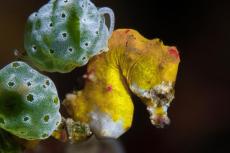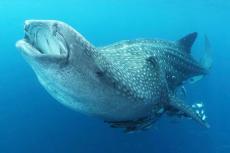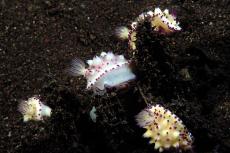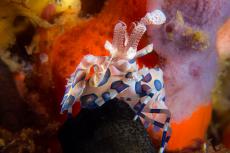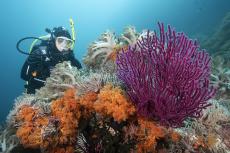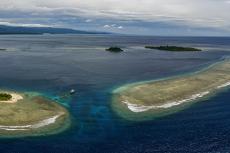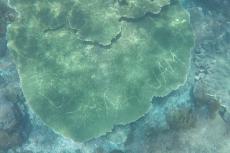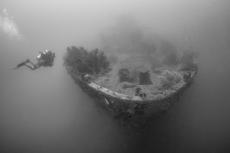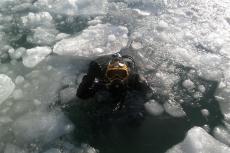Beautifully adapted to an ambush predator existence, wobbegongs rely on their exquisitely cryptic coloration to avoid detection and catch their prey by surprise.
Contributed by
Wobbegongs—also commonly known as carpet sharks due to their velvety and highly ornamented livery—are currently grouped into three genera and eleven species. All are found in the Western Indo-Pacific, mostly in shallow Australian and Indonesian waters. Their common name derives from the Australian aboriginal language meaning “shaggy beard”, referring to the flaps and tassels growing around their wide mouths.
The specimens featured in these pages were all photographed during several separate dives in the Raja Ampat area (an archipelago of four large islands and several islets located in front of the Vogelskop Peninsula) and are easily identified as tasselled wobbegongs, Eucrossorhinos dasypogon, a species frequently observed in West Papuan waters where it reaches a maximum size of 1.3 meters. The largest species of carpet shark, the spotted wobbegong, Orectolobus maculatus, is found in Western Australia and grows up to an imposing 3.2 meters.
Only one—clearly identified in the caption of the image—is a very rare and apparently still undescribed species which we photographed in Bali. Most carpet sharks are rather small, but in fact they belong to the same order—the Orectolobiformes—of the whale shark, Rynchodon typus, the biggest living fish in the world.
The wobbegong's muscular body is wide and flat, finely patterned in yellowish and pale blue spots, with bands and rosettes neatly arranged on a tan background. Wobbegongs are a true wonder of nature to behold, as they lie immobile in an ambush on large table corals—a far cry from the popular image of the shark as a torpedo-like, steel-grey, sleek predator patrolling the blue void of the open ocean.
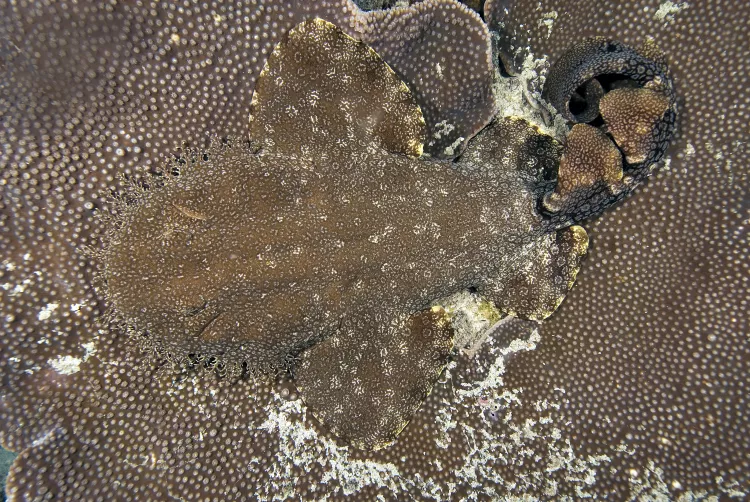
Their incredibly wide, highly compressed head and mouth profile is broken by an array of dermal flaps and tassels. Their small, beady and slightly malevolent eyes are cleverly hidden in a confusing maze of reticulations. Their broad, paddle-like pectoral fins are widely spread out, and their dark, ribbon-like tails are curved at a sharp angle
Spotted wobbegongs are almost impossible to detect in the layered, highly structured environment of West Papuan coral reefs—despite sitting out in the open and in full sunlight most of the time, as if brashly defying divers and prey alike to find them. Their apparently peaceful, even torpid attitude—as it usually happens in nature—can be mortally deceptive, however, as when needed, they will unexpectedly explode into action and strike with lightning speed at fish passing within reach of their cavernous mouths, usually gulping prey down in a matter of seconds.
Diving with wobbegongs
Territorial and sedentary, carpet sharks make wonderful and obliging subjects—careful divers moving slowly and cautiously can actually approach them within inches—but one must never forget that these sharks are perfectly adapted and highly evolved sit-and-wait ambush predators, after all, gifted with an exceptionally big mouth displaying a formidable array of sharp teeth including a set of frontal snake-like curved fangs to get a better grip on their slippery prey and a supple, muscular, highly flexible body. Wobbegongs can easily bend over and bite their own tail, so don’t pull it.
Reluctant to move if not unduly disturbed and relying on their spectacular camouflage to avoid detection instead, wobbegongs are also well known to inflict serious bites on waders and snorkellers who step on them in coastal waters.
As most ambush predators (one only has to think of several arboreal snakes to remark the striking similarities), wobbegongs not only have fearsome front fangs but also show a worrying tendency to hold tight with pitbull-like tenacity once they have bitten, so one has to be very careful in dealing with them as camera subjects.
Divers also have to remember, as with most other large fish, never to block their escape route when one is found in a cave or under an overhang. However small, a shark intent on leaving its lair in a hurry will not hesitate to thrash violently and strike blindly at anything obstructing its way.
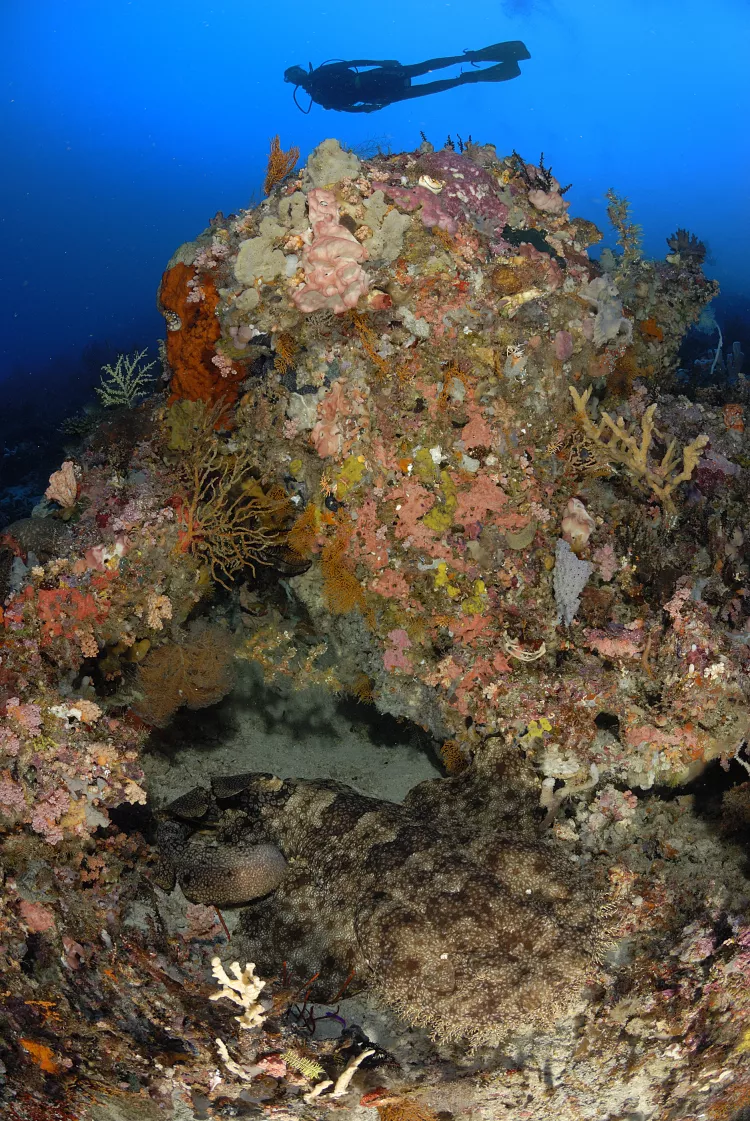
Regularly sighted on the colourful, overwhelmingly rich coral reefs of Indonesia’s easternmost province, the tasselled wobbegongs of West Papua are a source of endless wonder and amazement to divers. Stunning examples of the science of camouflage in its most evolved form, superbly adapted to their sun-dappled shallow water habitat, they lie still on flat table corals like some exquisite work of abstract art, the weird and wonderful creation of an underwater interior decorator gone slightly mad. Wobbegongs are marvelous icons of nature’s whimsy and a wildlife photographer’s dream. ■

